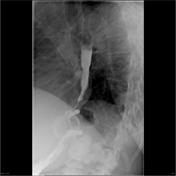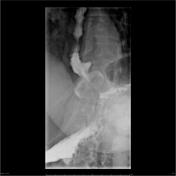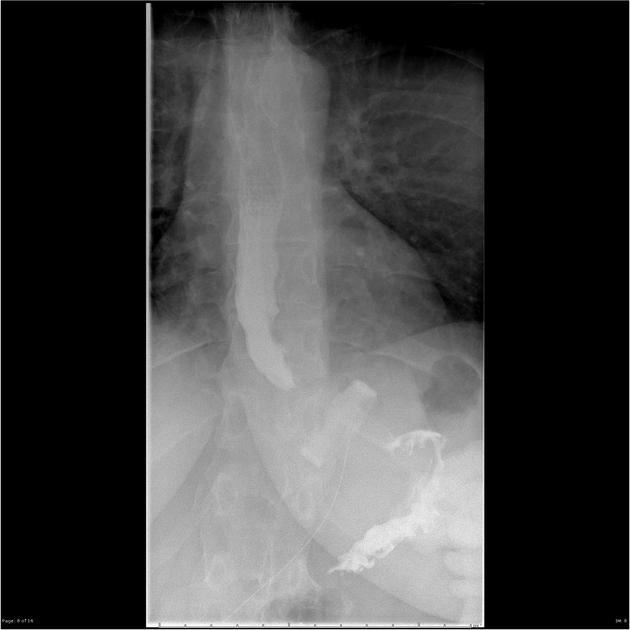Presentation
Three days of epigastric/RUQ pain with post-prandial nausea on a background of gastric band surgery two years ago.
Patient Data







Contrast passes easily through the gastric band with no hold-up. Proximal to the gastric band there is a small diverticulum that completely empties, this is best appreciated on the oblique view. There is tertiary peristalsis in the esophagus, which may be secondary to the gastric band. Note of contrast in the large bowel from prior CT with oral contrast.
Case Discussion
Epiphrenic diverticulum are most commonly associated with esophageal motility disorders associated with achalasia.
Rarely, epiphrenic diverticulum associated with gastric bands may develop. Esophageal motility disorders are a known complication from gastric bands and morbidly obese patients also have increased esophageal manometric abnormalities 1. The position of the gastric band may also contribute to esophageal motility disorders.




 Unable to process the form. Check for errors and try again.
Unable to process the form. Check for errors and try again.